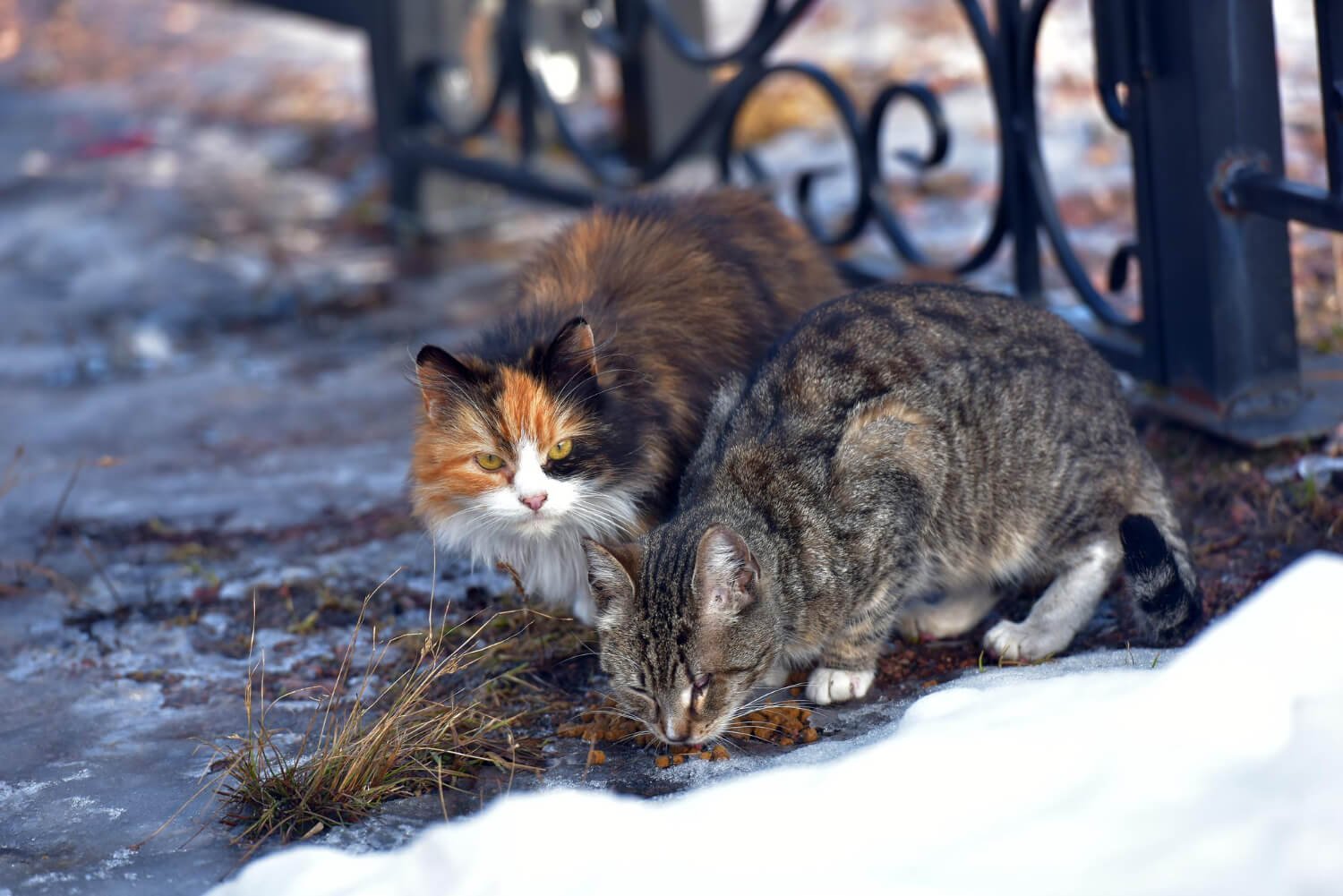Understanding Feral and Stray Cats
Feral and stray cats are often misunderstood, but clear distinctions exist between these two groups. Stray cats are generally domesticated felines that have lost their homes and social ties to humans, often becoming disconnected from the familiar comforts of domestic life. They may demonstrate social behaviors that indicate a desire for human interaction or companionship, showcasing a more adaptable temperament compared to their feral counterparts. Strays can often be rehabilitated and may thrive in environments where they can safely reintegrate into a home setting.
In contrast, feral cats are unsocialized animals that have been born into the wild or have lived outdoors for most of their lives. They tend to avoid human contact and view humans as threats rather than companions. Feral cats establish colonies, forming complex social structures to aid in their survival. These structures often involve shared responsibilities among members, such as hunting and grooming, which can be critical for maintaining their well-being in harsh environments.
During winter months, both feral and stray cats face significant challenges related to extreme cold, snow, and limited access to food. Feral cats typically develop strong survival instincts, using their keen hunting skills to seek out available prey and finding shelters in abandoned buildings, under brush, or in other protected spots to evade harsh weather conditions. Stray cats, while generally better equipped for human environments, also struggle against the elements, particularly if they are not used to living outdoors.
An understanding of these behaviors is essential for anyone looking to provide care or support to feral and stray cats. By recognizing their unique needs and social dynamics, caregivers can create more effective strategies to ensure their health and safety during winter months, offering vital assistance to these often-overlooked members of the feline community.
Creating a Safe and Warm Shelter

Providing shelter for feral and stray cats during the winter months is crucial for their survival. As temperatures drop and inclement weather becomes more prevalent, these animals face significant risks without adequate protection. Therefore, creating a safe and warm shelter can help ensure their well-being by keeping them insulated from harsh winds, snow, and rain.
When selecting materials for a cat shelter, using insulated and durable items is essential. For instance, structures made from wood, plastic, or Styrofoam are often recommended, as they provide good insulation against freezing temperatures. It is also beneficial to use weather-resistant materials to prevent moisture from seeping into the shelter. Line the interior with straw, not blankets, as straw is better at insulating and stays dry. This strategy is particularly important because moisture can increase the risk of hypothermia for these vulnerable animals.
Location is also a critical factor in ensuring the effectiveness of a shelter. Placing the structure against a wall or under a porch can provide some windbreak and shelter from the elements. Additionally, positioning it in an area that is not overly exposed to foot traffic can keep the cats feeling secure. It is also advisable to elevate the shelter off the ground slightly, which helps prevent moisture accumulation from snow or rain.
Regular maintenance of the shelter is vital for its longevity and effectiveness. Inspect it frequently to check for any damage or signs of wear, ensuring that it remains insulated and accessible. Cleaning the interior periodically can also help keep the area hygienic and more inviting for the cats. Monitoring the shelter will allow individuals to assess how well it meets the needs of the feral cats in their area, ultimately contributing to their welfare during the winter months.
👉 Step by step instructions on How to Build a Cat Shelter for Stray and Feral Cats
Feeding and Nutrition Needs

During the winter months, feral and stray cats face increased challenges in finding adequate food due to harsh weather conditions and scarcity of prey. Nutritional requirements for these cats shift significantly in colder temperatures, necessitating a diet that helps them conserve energy and maintain body heat. It is crucial to provide them with high-quality cat food that is rich in proteins and fats, which serve as essential energy sources. Foods specifically formulated for outdoor or feral cats are often higher in calories, making them a suitable choice for winter feeding.
Wet and dry cat food both have their benefits; however, wet food can be more hydrating, which is essential since access to water sources may be limited during freezing temperatures. It is beneficial to incorporate a mix of both types, ensuring that feral cats receive adequate nutrition and hydration. Whenever possible, providing some canned food can help boost their water intake, especially if they are not able to find liquid water due to freezing.
Establishing a consistent feeding schedule is another vital aspect of caring for feral and stray cats during winter. Regular feeding at the same times each day helps them adjust to a routine, allowing their bodies to learn when to expect nourishment. This regularity can lead to better nutritional intake, enabling them to build up the necessary fat reserves for warmth and energy. It is important to offer food in a sheltered area to protect it from the elements and encourage the cats to return consistently.
In addition to food, ensuring easy access to clean, unfrozen water is imperative, as hydration plays a significant role in overall health and well-being. Utilizing heated water bowls can help maintain a supply of liquid for the cats during particularly cold spells. Providing adequate nutrition and hydration can significantly enhance the chances of feral and stray cats surviving the harsh winter conditions.
 Outdoor Heated Pet Bowl with Double Removable Stainless Bowl on Amazon
Outdoor Heated Pet Bowl with Double Removable Stainless Bowl on Amazon
Health Monitoring and Veterinary Care

During the winter months, feral and stray cats are particularly vulnerable to several health risks, including hypothermia, frostbite, and other cold-related illnesses. The drop in temperature can have severe implications for these animals, as they often lack proper shelter and warmth. Caretakers should be vigilant in monitoring the health of these cats, as early detection of illnesses can significantly improve their chances of survival.
Health monitoring involves regularly observing the behavior and physical condition of the cats in their care. Signs of distress may include excessive shivering, lethargy, or avoidance of normal activities, which can indicate that a cat is suffering from the effects of cold weather. Additionally, caretakers should check for physical signs such as frostbite, which might present as discolored or swollen pads and ears. By establishing a routine for monitoring, caretakers can better assess the health of these animals and respond accordingly.
When health issues are identified, providing timely veterinary care becomes crucial. Vaccinations are essential for protecting feral and stray cats from common diseases, especially when they are at risk of exposure to contaminated environments. Furthermore, enrolling these cats in spaying/neutering programs not only helps control the population of strays but also contributes to their overall health by reducing the risk of certain illnesses. Caretakers should consult local animal welfare organizations to find accessible veterinary services for these cats.
Understanding the specific health needs of feral and stray cats during winter is vital for their well-being. Through consistent monitoring and seeking veterinary assistance when necessary, caretakers can significantly alleviate the risks associated with the harsh winter months. Addressing these health concerns not only supports the individual cats but also enhances the health of the community as a whole.



